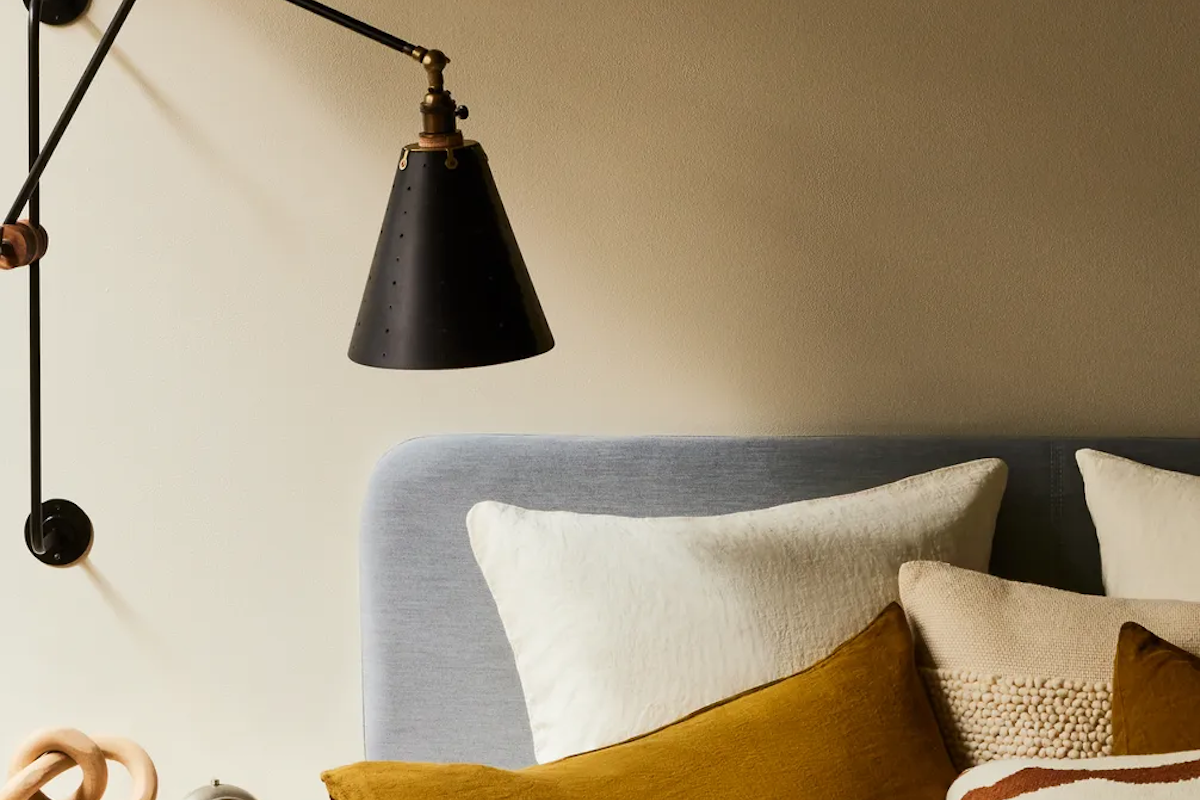Ever swap out a light bulb at home only to realize its light appears completely different from the rest of the home? You're not alone.
When my husband and I moved into our apartment two years ago, it came with recessed lights — some of them I wanted to keep (like in our kitchen), others I wanted to convert to more attractive flush mount fixtures (hallways and bathrooms) and pendant lights (kitchen island). But once I installed all of them and added bulbs, to my horror, the light they cast just didn't seem to match.
So what had I done wrong?
Turns out, it's a common oversight — a little number called Kelvin. The Kelvin measure is one of a bunch of (very confusing) numbers found on the side of bulb packaging. Most people, when buying a light bulb, will look at lumens and wattage. Others like me will buy bulbs based on descriptors like "Soft White," or "Daylight," which, as I've discovered, is a representative but an inadequate measure.
Kelvin often gets left out as a measure. While lumen is a measurement of brightness — bulbs with higher lumens give off more light — and watts measure how much energy a light bulb uses (some light fixtures come with a recommendation), Kelvin determines the color temperature of the light it emits. The lower the Kelvin rating, the warmer the light, and vice versa. When you do what I did, and mix up your Kelvin, you end up with a confusing jumble of warm and cool light.
To better help you understand, here's a breakdown of color temperature:
- Soft white (2,000 to 3,000 Kelvin) is warm, cozy, and veers towards a yellow glow, similar to incandescent bulbs. Remember, there's variance even within this scale! Try comparing a 2700K bulb with a 3000K bulb — see?
- Warm white (3,000 to 4,000 Kelvin) is best suited for kitchens, bathrooms, and garages because they ensure the room is well-lit and crisp while still retaining a warmer glow.
- Cool white/Daylight (4,000 to 5,000 Kelvin) has a white, almost bluish light, and therefore have a less cozy feel. It works best for kitchens, work spaces (such as an office) or retail spaces.
- While you can go higher than this range, it's not ideal for home use.
While there's really no one "best color" for your home, experts advocate consistency. This doesn't mean you have to have the exact same temperature through the home; it just means you need to understand what (and why) you pick. To keep it simple: warm light tends to be cozier and cool light bulbs are usually better at mimicking daylight, and therefore great for task lighting. When picking bulbs, people tend to go higher on the scale for kitchens and bathrooms, and warmer with living rooms and bedrooms. Alternatively, you can go cooler with your overhead lighting, and supplement with warmer light sources closer to eye level.
Ultimately, it's a matter of personal preference: Food52 design director Timothy McSweeney, prefers keeping his recessed lighting at 2700K and the rest of his home at a consistently warm 2200K. "The nice thing about our wafer LED recessed lights though is that they have a switch to toggle between light temperatures." That definitely takes some of the guesswork out of choosing. Another way? Smart bulbs that let you adjust the brightness and color temperature, or even change the color completely, of several lights simultaneously via an app.
Food editor Emma Laperruque is in the process of swapping out her bulbs to smart bulbs. "These adjustments are especially useful in the spaces we use at nighttime," she says, adding, "The bulbs also come with a 'sun match' feature I have been meaning to try." Swapping in multiple smart bulbs might set you back some (try phasing them in, which is my plan), but think of it as an opportunity to fine-tune the lighting in your home . . . without losing your mind over it.
Oh, before I let you go, here's yet another light bulb measurement I just learned about: CRI. The CRI, or color rendering index, is a scale from zero to 100, and refers to how colors look under the light. How high does the CRI need to be? While most bulbs are around 80, the consensus is: the higher the better. But more on that in a later story — I'm mentally math-ed out.


Shares